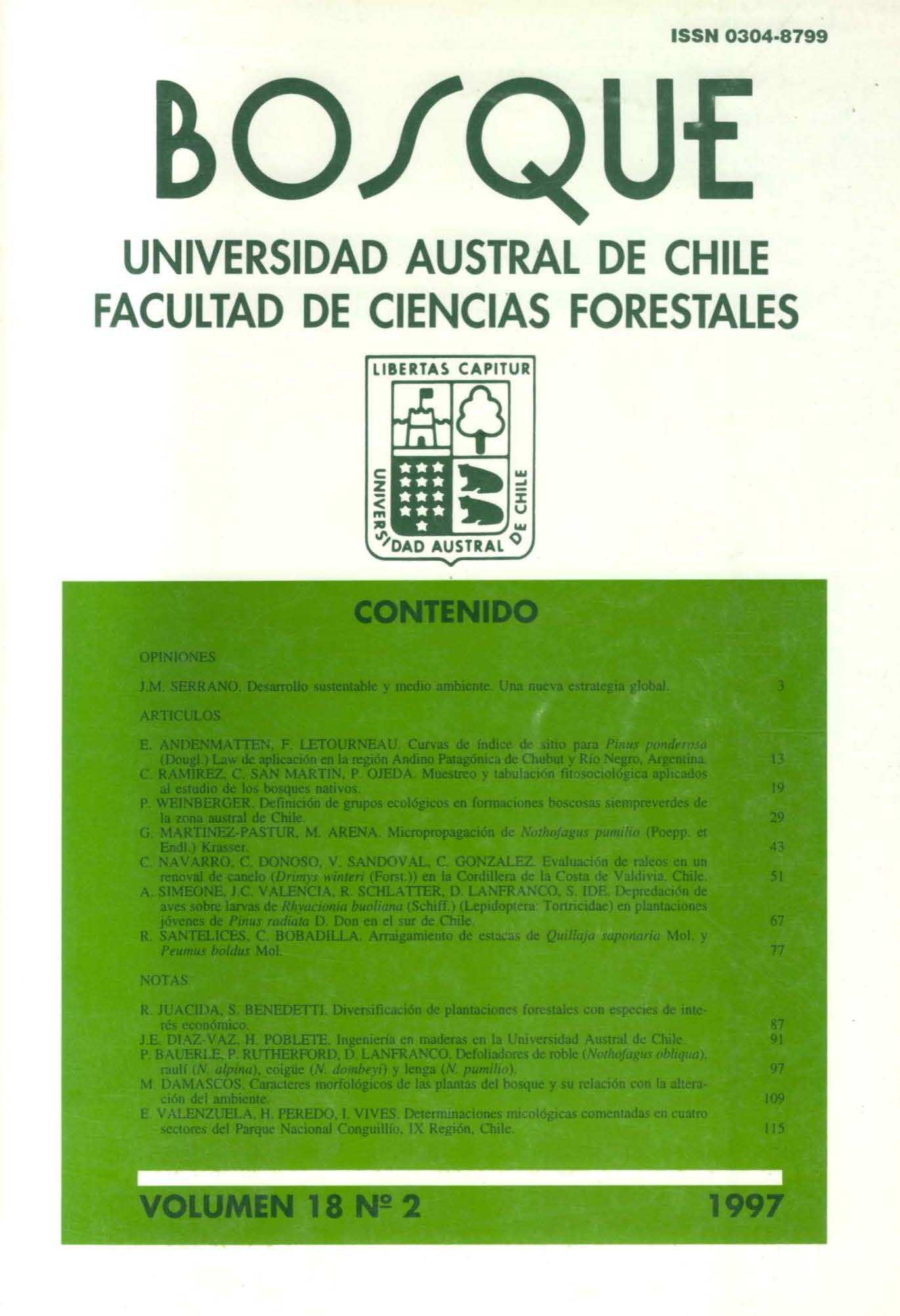Roble (Nothofagus obliqua), Raulí (N. alpina), Coigüe (N. dombeyi) and Lenga (N. pumilio) defoliators
Main Article Content
Abstract
Defoliator species always has been associated to Chilean native forests, but never developing into a serious pest. Now probably due to human intervention in forest and some climatic changes, some population dynamics of defoliator insects has been changed, affecting the forests health. Nevertheless as all are native species have biocontrollers, mostly parasitoids.
Through bibliographical research, a list of the main defoliators insects that attack Nothofagus obliqua, Nothofagus alpina, Nothofagus dombeyi and Nothofagus pumilio was made. The following data was reviewed: associated species, type and magnitude of damage and the stage of the insect that produced the main damage.
To evaluate the magnitude of the damage, some factors such as economic importance of the tree species, its significance within the native forests and type of foliage (deciduous or perennial) were considered.
The results show that Nothofagus obliqua and Nothofagus dombeyi have the main number of associated defoliators.
Hornius grandis is the most poliphagous species, found in Nothofagus obliqua, N. alpina and N. dombeyi. Among the types of defoliators, masticators are predominant. The most frequent species associated to the four tree species that were studied are: Hornius grandis Philippi and Philippi, Cerospastus volupis Konow, and Ormiscodes cinnamomea Feisthamel.

